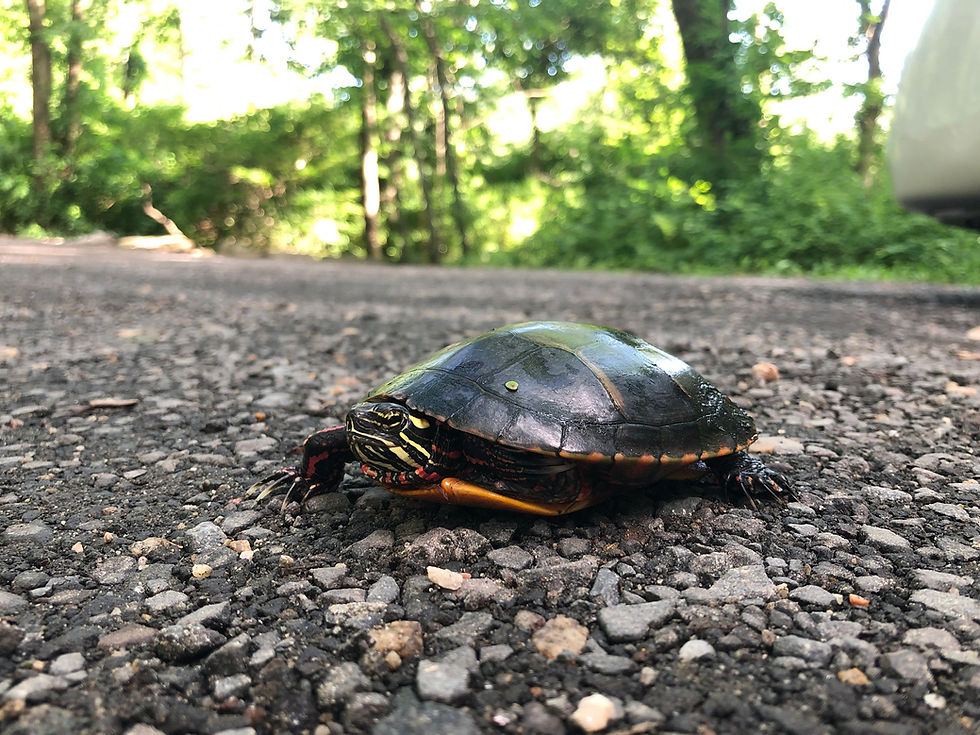Wood Ducks: A Conservation Success Story

By Tommy McCarthy, Environmental Educator
Wood Ducks are much more shy than the ubiquitous Mallards which are often seen swimming about in our local ponds, though during the breeding season they are present in similar numbers. If you have spent time exploring around the pond at Woodcock, you have likely heard Wood Ducks calling as they become alerted to your presence – but since it is a far cry from a quack, you may not have attributed it to a duck. Folks who see photos of this species for the first time often doubt if it is real, and it is easy to see why. The only genetically similar duck species is the Mandarin Duck (native to East Asia), and both it and the Wood Duck are recognized as the most ornate looking waterfowl species in the world. In my opinion, shyness is a fitting quality for such a gorgeous creature. Something so beautiful should not be seen so often that it is taken for granted.
It is especially apparent that the beauty of this species should never be taken for granted, upon learning that there was once a time when they were believed to be on the brink of extinction. It is important to note that Wood Ducks are strictly a North American species – a native bird with no populations elsewhere, and in precolonial times they were thriving and abundant in the expanses of wooded wetlands. Fast forward to the early 20th century, and Wood Ducks had undergone a drastic decline due to habitat loss and commercial hunting. In addition to being hunted for meat, their feathers were often used to adorn ladies’ hats. They became the most hunted waterfowl species in North America, and the forested wetlands on which they relied were frequently drained and/or logged so that they could be used by humans. By the end of the 19th century, naturalists were reporting that Wood Ducks were “becoming scarce” and “likely to be exterminated”.
Thankfully in 1918, the tide turned for Wood Ducks as well as many other bird species which faced threats from humankind. One of the early conservation laws, the Migratory Bird Treaty Act (MBTA) was passed in congress, and it included a nationwide moratorium on Wood Duck hunting. This allowed their populations to recover, and in 1941 the hunting seasons reopened with more regulation and better management. Aside from the temporary hunting ban, another factor that contributed to their successful recovery was the installment of artificial nesting boxes. Wood Ducks are a cavity nesting bird, and so available tree cavities of specific size and location are a crucial component of their habitat – one that became scarce with the clearing of forests. Nesting box installation efforts were started in 1937 by the US Fish and Wildlife service, and since then, thousands of these boxes have been installed by conservation agencies and private citizens alike. You’ve almost definitely seen some of them around in local nature preserves – there are two on the pond here at Woodcock!
Today, Wood Duck populations are either stable or increasing. I have gone to great effort to see these shy birds up close. The photo above is one of my own, and to have witnessed and captured that moment is very meaningful to me. Their beauty is unparalleled and it breaks my heart to think that they could have been lost. I am indescribably grateful that the story of Wood Ducks ended up not as a tragedy, but as one of the most notable examples of success in wildlife conservation history! It is painful to imagine that they could have been reduced to a series of black and white photos or artist renditions. Who would even believe that such a gorgeous creature had existed? We’d all have thought the artists must have been exaggerating.
Citations:
Davis, J. B. Status of the Wood Duck. Ducks Unlimited. Retrieved March 15, 2022, from https://www.ducks.org/conservation/waterfowl-research-science/status-of-the-wood-duck
Wood Duck Boxes. Ducks Unlimited. (n.d.). Retrieved March 15, 2022, from https://www.ducks.org/conservation/waterfowl-research-science/wood-duck-boxes





